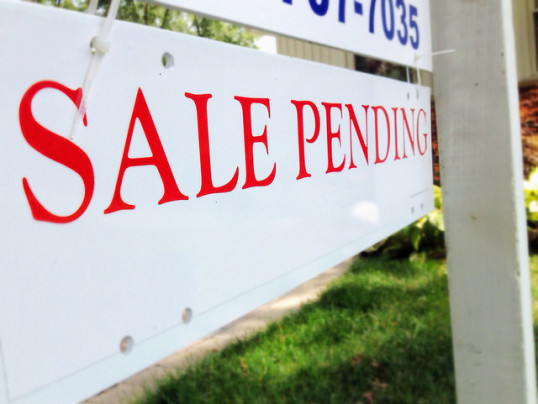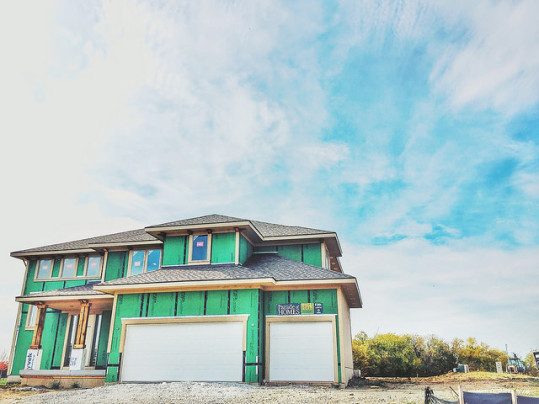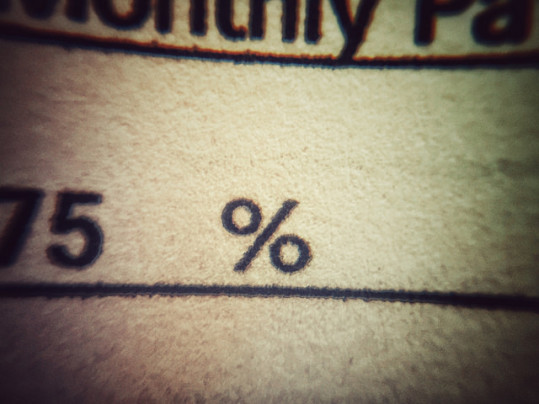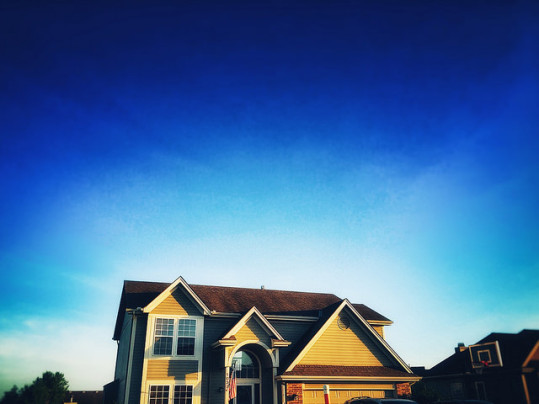The number of signed contracts to buy homes was up 2.4 percent in February from the month before, according to new numbers from the National Association of Realtors. The improvement puts pending sales 9.4 percent higher than they were at the same time last year. An important indicator for the housing market, pending home sales refer to sales that are under contract but not yet closed. They’re a good predictor of future home sales, since contract signings typically take place weeks before closings. Lawrence Yun, NAR’s chief economist, says the improvement is evidence that the housing market was strong heading into the coronavirus shutdown. “February’s pending sales figures show the housing market had been very healthy prior to the coronavirus-induced shutdown,” Yun said. “Numbers in the coming weeks will show just how hard the housing market was hit, but I am optimistic that the upcoming stimulus package will lessen the economic damage and we may get a V-shaped robust recovery later in the year.” In short, Yun believes buyer demand will bounce back and home sales missed during the spring will simply be pushed to late summer or fall. (source)
Archive for March 2020
The Most Likely New Home Features Of 2020
Home builders have to be tuned in to what potential buyers want. After all, if they’re building homes that don’t have the features and amenities that buyers desire, they’re going to have a hard time selling houses. That much is obvious. The harder part is determining what will be the most sought after features from year to year. Fortunately, the National Association of Home Builders conducts a nationwide survey each year to drill down on what builders say are the most popular home features. For example, according to the most recent results, the number one feature most likely to be included in newly built single-family homes this year is a walk-in closet for the master bedroom. That shouldn’t come as too much of a surprise, though. Storage areas are always big with buyers. Other features that made it near the top of the list include low-energy windows, laundry rooms, energy-efficient lighting, a central kitchen island, energy star appliances, and great rooms. At the bottom of the list, cork flooring, geothermal heat pumps, solar water heating systems, dual master-bath toilets, and laminate countertops were picked as the features least likely to be included in new homes this year. (source)
Owning A Home Costs 31% Of Average Wage
Numbers from the first quarter of 2020 show homeownership becoming more affordable for average wage earners. In fact, according to ATTOM Data Solutions’ most recent Home Affordability Report, a median-priced home will cost someone earning the national average about 31 percent of their income – the lowest percentage since the fourth quarter of 2017. Todd Teta, chief product officer with ATTOM, says falling interest rates have helped keep homeownership within reach. “It seems bizarre that median home prices have risen 8 percent over the past 12 years while average wages grew by less than half that amount,” Teta said. “But falling interest rates continue making up the difference, dropping monthly homeownership payments in a majority of the country.” The counties where a median-priced home was affordable in the first quarter included Cook County (Chicago), Harris County (Houston), Dallas County, Wayne County (Detroit), and Philadelphia County. Also in the report, among 483 analyzed counties, 323 were more affordable than their historic average – which represents a nearly 12 percent improvement over the previous quarter. (source)
Mortgage Rates Increase For 2nd Straight Week
According to the Mortgage Bankers Association’s Weekly Applications Survey, average mortgage rates were up last week for the second consecutive week. Rates for 30-year fixed-rate loans with both conforming and jumbo balances rose from one week earlier, as did rates for 15-year fixed-rate loans. Mortgage rates for loans backed by the Federal Housing Administration declined. Joel Kan, MBA’s associate vice president of economic and industry forecasting, said the increases led to a big drop in refinance activity week-over-week. “The 30-year fixed mortgage rate reached its highest level since mid-January last week, even as Treasury yields remained at relatively low levels,” Kan said. “Several factors pushed rates higher, including increased secondary market volatility, lenders grappling with capacity issues and backlogs in their pipelines, and remote work staffing challenges. With these higher rates, refinance activity fell 34 percent, and both the conventional and government indices dropped to their lowest level in a month.” Kan believes actions taken by the Federal Reserve this week will help put downward pressure on rates in the week ahead. (source)
New Home Sales Slip From January’s High
Sales of newly built, single family homes in February fell 4.4 percent from the month before, according to new numbers from the U.S. Census Bureau and the Department of Housing and Urban Development. The decline comes a month after sales hit a 13-year high in January. January’s numbers were also revised upward to reflect more sales than previously reported, which means February’s number – even after the month-over-month decline – is still 14.3 percent higher than last year at the same time. But while the strong sales numbers would normally be a hopeful sign for the housing market heading into its busiest season, economists are forecasting fewer sales in the weeks ahead due to the coronavirus. There is reason to believe, however, that, while sales may slow, the housing market’s fundamentals are strong enough to allow it to absorb some of the virus’ impact on the economy. Also in the report, the median sales price of new homes sold in February was $345,900. The average sales price was $403,800. (source)
What Might Be Ahead For Home Prices?
Home prices have been rising for several years now. A combination of increasing buyer demand and a lower-than-normal number of homes for sale led to more competition among home shoppers and put upward pressure on prices. That’s why most of the discussion about where the housing market was headed this year focused on the number of available homes for sale. If more homes became available, it would help keep prices from climbing too quickly. If inventory stayed low or fell further, price increases might begin to accelerate. Now, due to the coronavirus, there is more uncertainty. But, according to some analysts, the housing market – and home prices – are well positioned to withstand the effects of any upcoming volatility. Mostly, this is because the market’s main challenge was there not being enough homes to keep up with demand from buyers. If demand were to temporarily decline, price increases may slow but something similar to the crashing values seen during the financial crisis would be unlikely. Naturally, there are still a lot of unknowns but the strength of the market and the balance of supply vs. demand should help provide the real-estate market with some stability in the days ahead. (source)
February Home Sales Highest Since 2007
Sales of previously owned homes spiked in February, rising 6.5 percent over month-before numbers, according to new data released by the National Association of Realtors. The improvement made for the strongest month since 2007. “February’s sales of over 5 million homes were the strongest since February 2007,” Lawrence Yun, NAR’s chief economist, said. “I would attribute that to the incredibly low mortgage rates and the steady release of a sizable pent-up housing demand that was built over recent years.” Home prices and for-sale inventory were also up. But while the gains show the housing market poised for further improvement, current events are expected to slow that progress in the weeks to come. Still, Yun expects demand to bounce back. “For the past couple of months, we have seen the number of buyers grow as more people enter the market,” Yun said. “Once the social-distancing and quarantine measures are relaxed, we should see this temporary pause evaporate, and will have potential buyers return with the same enthusiasm.” (source)







